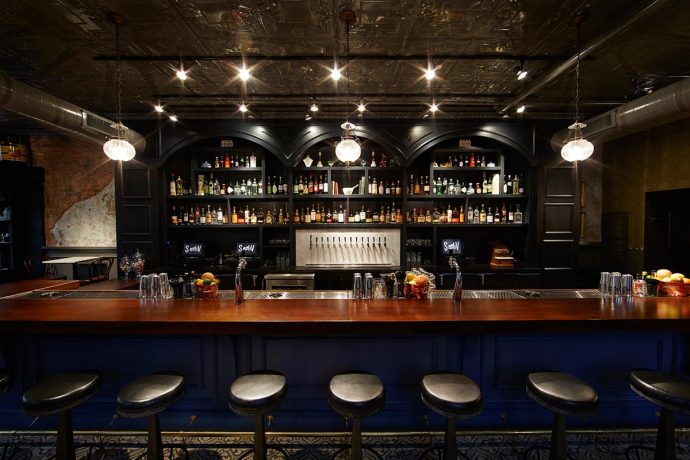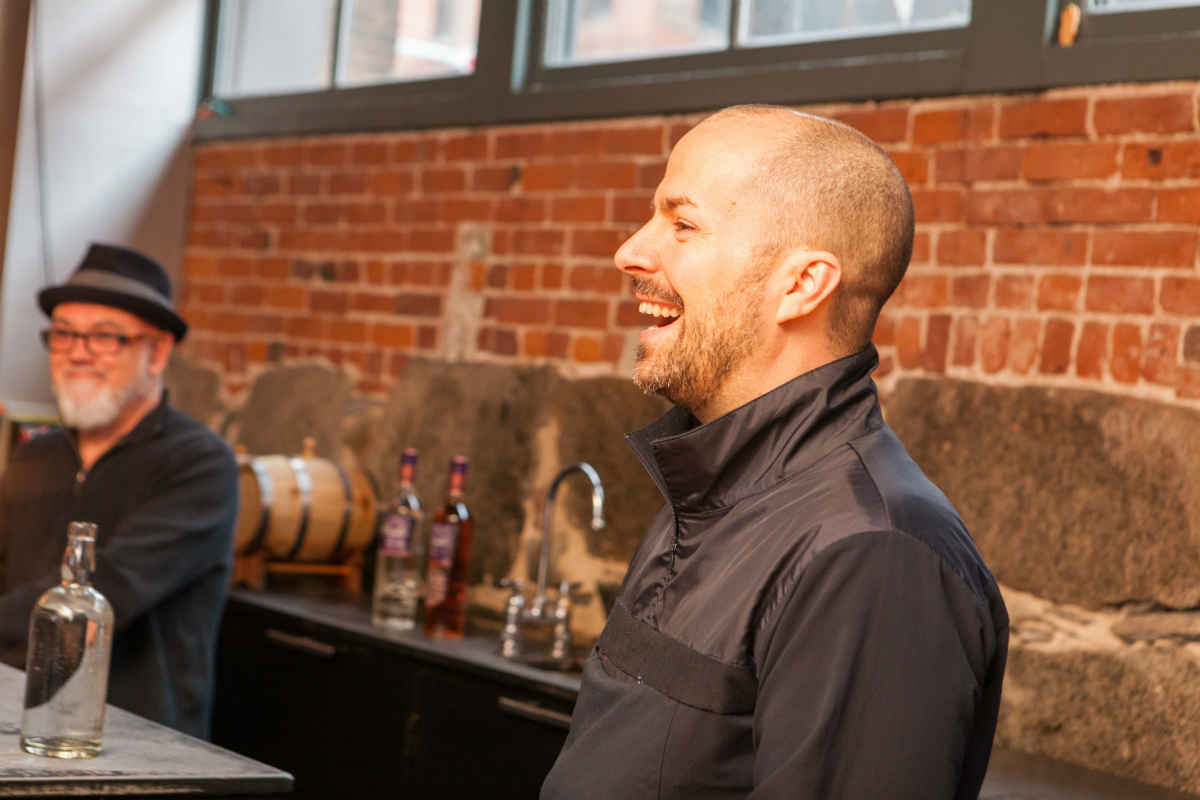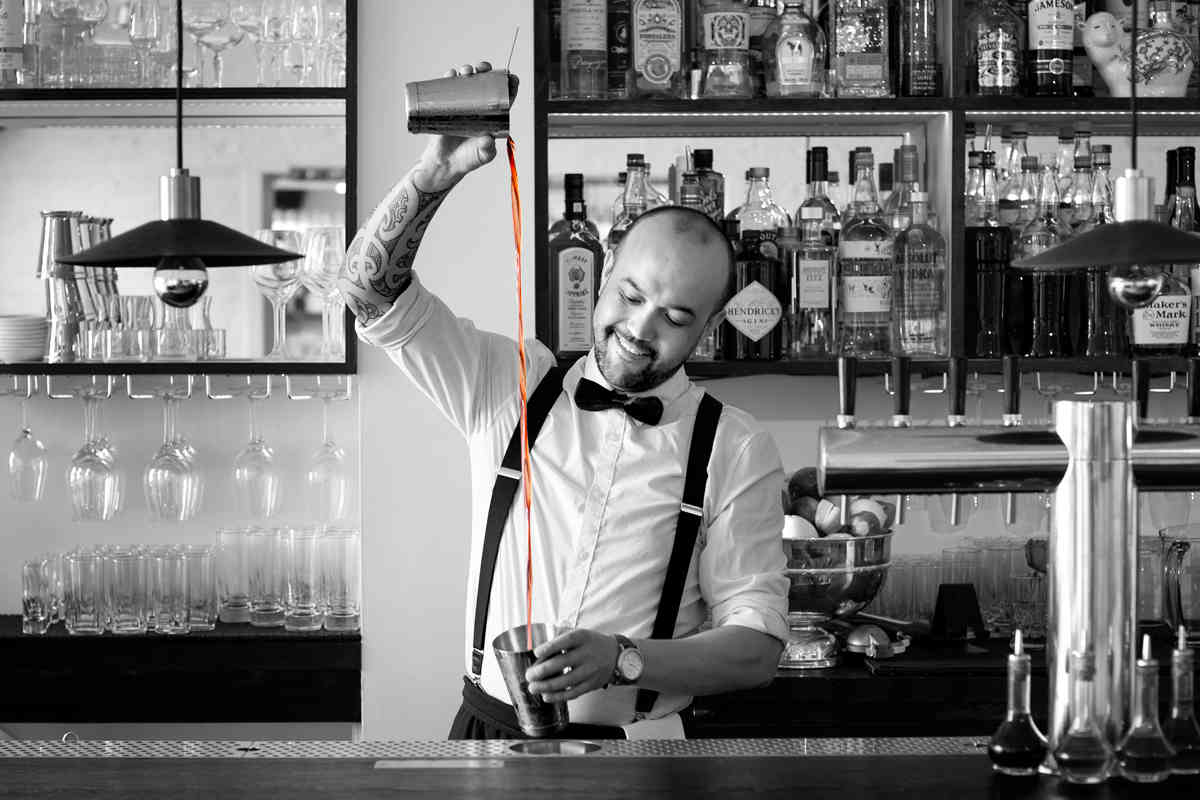It’s no secret that the resurgence of craft cocktails has been most popular on the coasts. While places like New York and San Francisco are well established as hubs of modern bartending, many Midwestern cities have struggled to sell themselves as great drinking destinations. And it’s not a matter of quality—some of the best bars in the country are nested squarely in the middle.
Among them is Sundry and Vice, an apothecary-themed watering hole in Cincinnati that has been a bellwether for the city’s burgeoning cocktail scene. Located in the flourishing Over-the-Rhine neighborhood, its old-timey quirks fit right in with the historic architecture that surrounds it.
And as far as founders Stuart King and Julia Petiprin are concerned, its success has proven that the Midwest is gearing up for a cocktail renaissance of its own.
Meeting of the Minds
Before they came together to build Sundry and Vice, Petiprin and King didn’t exactly roll in the same circles.
King, an Ohio native, started his career in the front office of the Cincinnati Reds. Law school took him to San Diego a few years later, and gave him his first taste of the city’s growing cocktail culture.
“I would go around to the Gaslamp District, all these cool spots in San Diego,” he explained, “and I really started noticing the shift that was happening in the bar industry.”
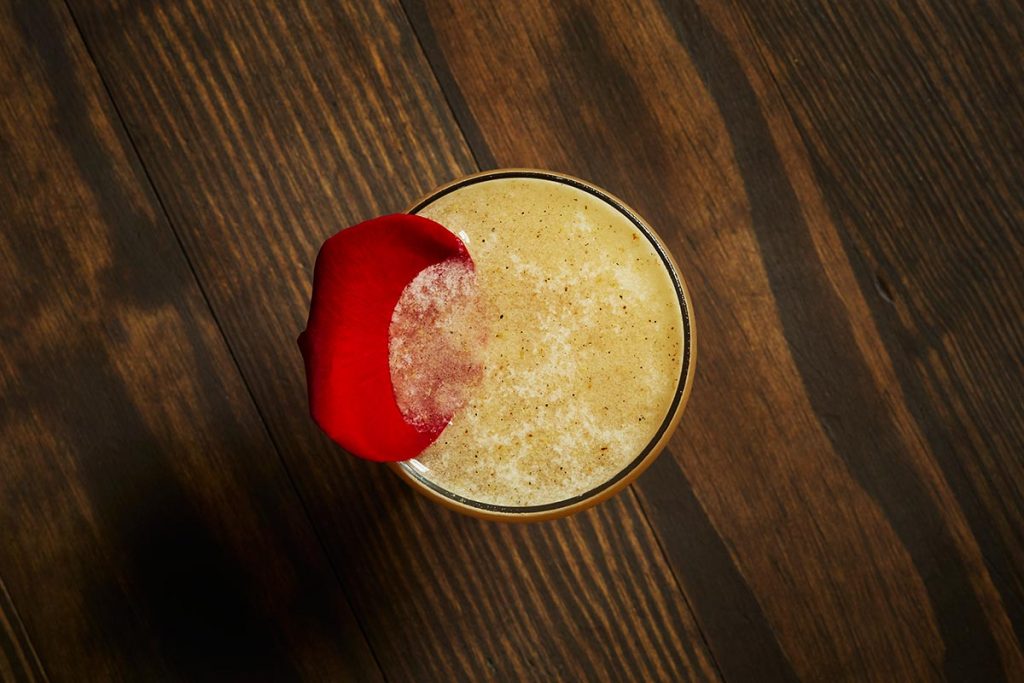
Tiz for Tender Hearts | Photo: Aaron Conway
He made his way north to Los Angeles in 2007, and while working with the Dodgers he fell in love with the bars near his home downtown.
“That’s when downtown LA really started to take off, it was a very creative time for that place,” he said. “I started seeing these incredible bar companies—213 Ventures, Cedd Moses, The Houston Brothers—starting to take over LA and capture people’s imaginations.”
And so, the first inspiration for Sundry and Vice was born.
Petiprin, on the other hand, had long been a bar professional. “I’ve been in this business since I was, well, old enough to be in this business,” she laughed. “I’m from Michigan, and when I turned 20 I got hired as a bartender—because you can be a bartender under the age of 21 there, which is kind of crazy.”
She eventually moved to LA as well, where she continued to work in the bar industry while pursuing a degree in interior design. A mutual friend introduced her to King, who was still batting around ideas for his own bar, and needed someone with her expertise to help flesh them out.
“I had always hoped to merge the two industries, design and bartending,” she said. “And as luck would have it, that’s exactly what I got to do after meeting Stu.”
Cincinnati Charm
The catch, however, was that King had to convince her to move to Ohio.
“It wasn’t as difficult as you’d think,” King insisted with a laugh. “Initially she was like, Cincinnati? Why there? But then when you get here, you realize just how charming, interesting, and historic this city really is.
“And then you get to this neighborhood of Over-the-Rhine, and it’s fascinating. You’re walking around, completely surrounded by historic architectural gems—some of the most beautiful buildings I’ve ever seen—that have been around for hundreds of years. So I think the city did enough to sell her on the move, and then from there we just had to get to work.”
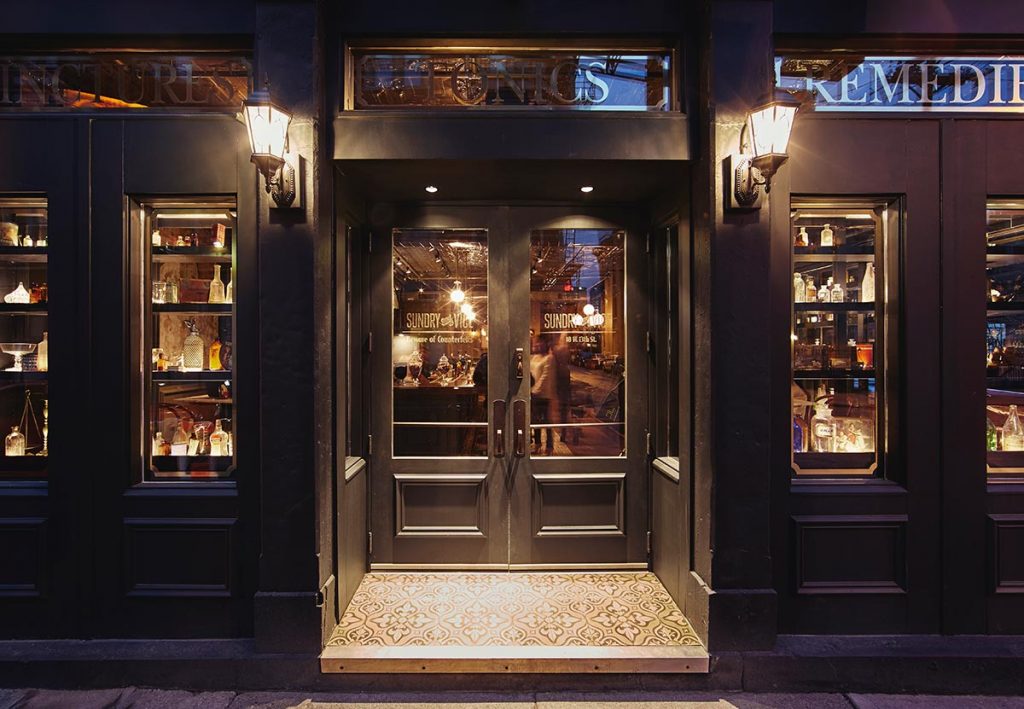
The storefront | Photo: Aaron Conway
While it was already an up-and-coming neighborhood, Petiprin and King noticed that there was a bit of a vacuum when it came to cocktail bars.
“There were a lot of great cocktails being made in the restaurants, but the actual cocktail bar scene had yet to really take hold,” Petiprin said. “It’s a young cocktail culture here, so we’re able to really be the leaders in this area as far as bartending goes.”
“Cincinnati was just starting to break out of this sort of late-’90s doldrums at the time,” King continued. “Great restaurants were opening up, great retail was opening up, people were embracing the history of Over-the-Rhine. But the one thing that was missing was a really incredible cocktail program with an experiential bar. Something that transports you a little bit.”
It was this desire to create an immersive bar experience, as well as the historic backdrop of the neighborhood, that inspired Sundry and Vice’s turn-of-the-century aesthetic.
A Modern Apothecary Shop
It didn’t hurt that the location they settled on was squarely rooted in the Prohibition era.
“Originally, this place was called Remus pharmacy,” King explained. “I started researching the neighborhood and I came across George Remus, who I’d never heard of before. He hadn’t yet been a character on Boardwalk Empire. But he was a pharmacist by the age of 19, and then went on to become one of the country’s biggest bootleggers and based his operation out of Cincinnati.

Antique prescriptions line the walls at Sundry and Vice | Photo: Aaron Conway
“So I was fascinated by the apothecary, pharmacy, speakeasy aesthetic. Jules and I worked together really well, and things started evolving. We realized that a speakeasy was kind of a dumb idea here. It would’ve worked, because it’s not played out here like it is in other cities, but that small, exclusive setup wouldn’t work in a neighborhood with this kind of volume. There are tens of thousands of people here during the day on Saturdays and Sundays, and they’re not going to go to a speakeasy. So we decided to open it up.”
The design and theme changed over the course of a year, until King and Petiprin settled on its final incarnation: a high-volume cocktail bar with all the trappings of an apothecary shop.
“I just went back to old apothecaries and soda jerks, things like that, and picked and chose the best parts of them to bring here,” Petiprin told us. “But this is a contemporary version of that style. I wanted it to be a little bit more modern, because while we’re apothecary themed, I also wanted to open it up to the neighborhood and have it be a real neighborhood bar. I wanted it to look like it had been here forever, but with some contemporary accents.”
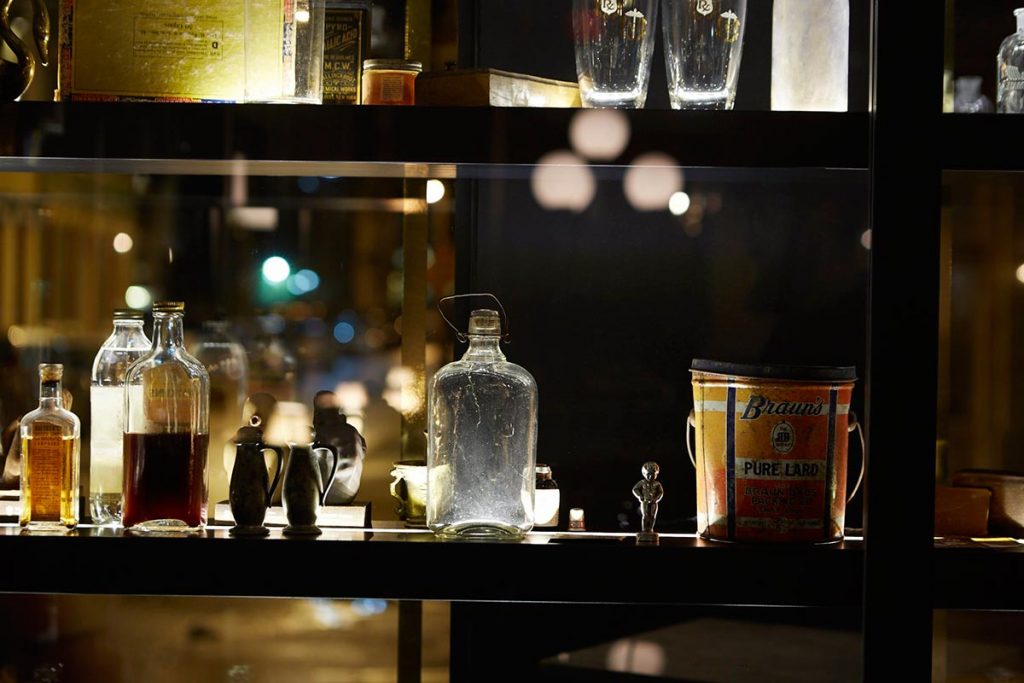
Shelves of antique medicine bottles | Photo: Aaron Conway
Rather than simply imitating that aesthetic, though, Sundry and Vice makes use of quite a few actual antiques. Real prescriptions from the 1920s and ‘30s adorn the bathroom walls (some for cannabis, heroin, and cocaine, from the good ol’ days of medicine), and dozens of old medicine bottles line the shelves.
“One other cool thing about being in Cincinnati, and in a neighborhood with such a cool community,” Petiprin said, “is that once we opened and people saw all the apothecary jars and tinctures and things lying around, people started adding to the collection. They’ll come in and say, ‘My grandfather was a pharmacist and he had all these bottles, why don’t you take them?’”
Sundry and Vice’s design has garnered a number of awards, including the Top Overall Interior Design Project from the 2015 Cincinnati Design Awards.
“We’re really proud of the design work,” King said. “Jules likes to be humble about it, but she pretty much did the whole thing herself.”
Cocktails to Match
In addition to the design, Petiprin was integral to the creation of Sundry and Vice’s bar program.
“Our program was initially conceived as a higher-end cocktail program, I just had no idea where to even start because I had never been a bartender,” King told us. “When Jules came in, I just gave her my ideas of what might work in Cincinnati and she ran with it.”
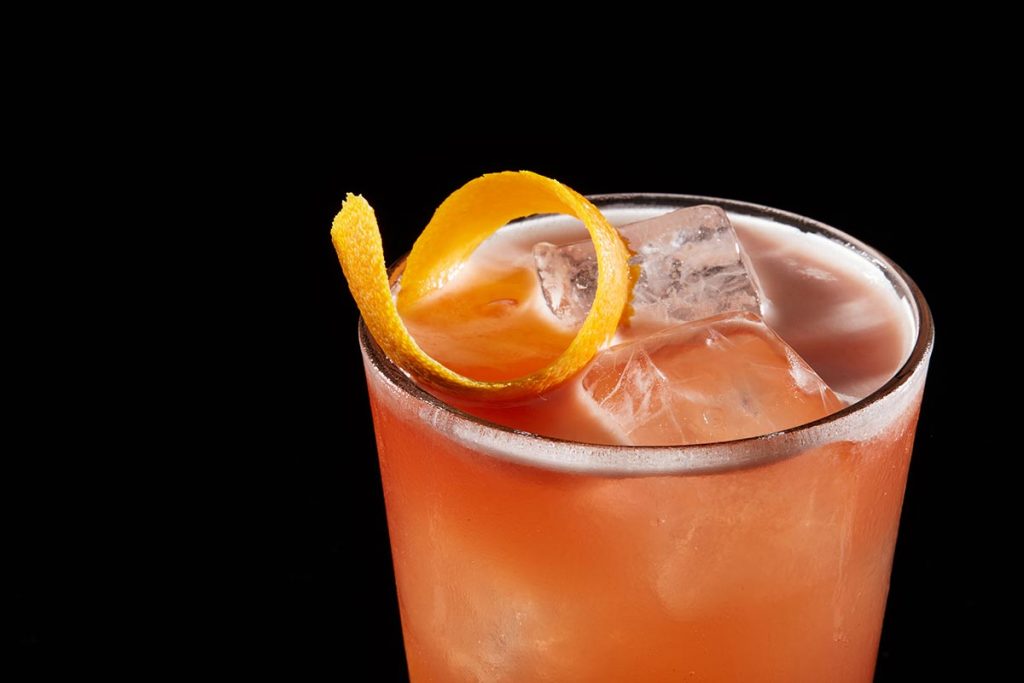
Pillow Talk | Photo: Aaron Conway
Initially, they brought in consulting bartender Brandyn Tepper (a protege of Milk and Honey legend Sam Ross) to lay the groundwork for their team.
“We did a really intensive training, which is something that people here hadn’t really seen before,” Petiprin explained. “We broke it down to the most minute fundamentals, like spending an entire day on how to use the tools. We’ve been building on that foundation ever since, and because it’s so strong, we’re able to get a little more creative now.”
The early menus featured drinks with patent medicine-inspired names, like “Dr. Shiloh’s Revitalizer,” but their program has recently started moving away from that kind of cutesy, retro affectation. Today, it’s a bit more down to earth with cocktails like the Cincinnati Roots, the Body Electric, and the Pillow Talk.
“Every menu from here on out is going to have an almost narrative structure to it,” King said. “I love storytelling, and the reason this place exists is because of my fondness for storytelling. And I think every menu should tell a story and an experience.”
What the Future Holds
It was apparent when talking to King and Petiprin that they’re never content to rest on their laurels.
“Sometimes Jules and I have to remind ourselves to slow down a bit, because we see more and more openings for more ideas and it can get a little out of hand,” King said. “We have to fight our instincts to take on too much, and because it’s a nascent scene here, developers come at you hard and opportunities come at you fast.”
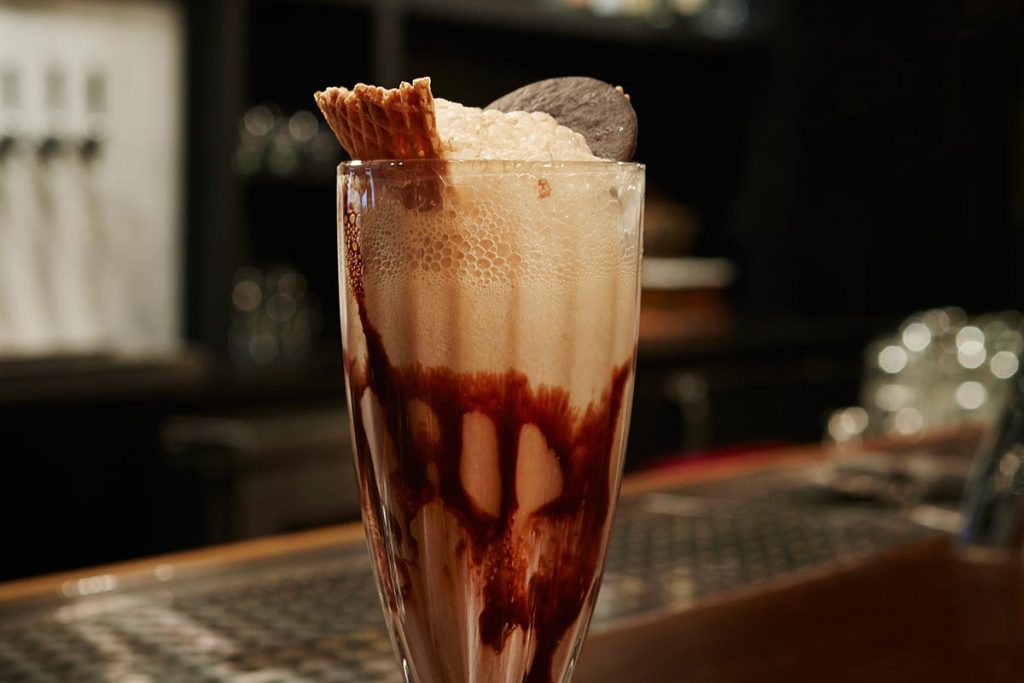
Cincinnati Roots, a boozy float | Photo: Aaron Conway
Along with Chicago and Pittsburgh, it seems that Cincinnati is quickly becoming one of the Midwest’s hubs for craft cocktails. The team at Sundry and Vice continues to train the city’s next generation of bartenders, and the scene is thriving.
“There’s a tremendous amount of opportunity in Cincinnati for the liberal arts folks who graduate and find that the nine-to-five, white-collar job either sucks or doesn’t exist,” King continued. “A lot of those people are going into bartending now, and realizing that it’s an actual career. Because of things that are happening in Cincinnati—culturally, entrepreneurially, artistically—opportunities are really opening up.”
“The city has this weird magic to it, which sounds funny if you’ve never been here,” Petiprin said. “But when people come here they end up staying.”
